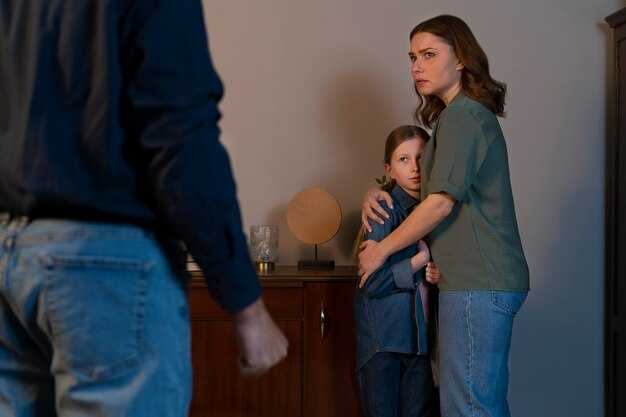Kabaca her üç kişiden biri — özellikle de gençlerde daha büyük bir oran — stresle o kadar bunaldığını ve çoğu gün başa çıkamadığını söylüyor ki. Ben de eskiden her gün böyle yaşıyordum. İnsanların sunduğu genel tavsiye — derin nefes alın, biriyle konuşun, banyo yapın — iyi niyetli olsa da, benim için onu çözmeye pek yaklaşmadı. Geçtiğimiz on yılda, özellikle de pandemi sırasında, neredeyse herkesin konsantre olma yeteneğinin bir kısmını kaybetti. Dikkatli, sakin ve işleri bitirebilir hale gelmek daha da zorlaşıyor. Bunu yaşamışsanız, iyi niyetlerinizi sadece izlerken çabalamaya devam etmekten kaynaklanan ezici duyguyu nasıl bildiğinizi biliyorsunuz. Gün için iyi niyetleriniz belirsiz planlara dönüşürken çok kötü hissedilir. İçinizdeki potansiyeli görebildiğiniz için kendinizi kötü hissedersiniz: arkadaşlarınızla bağlantı kurmak, bir partnerle tanışmak veya sahip olduğunuzu keyifle geçirmek, anlamlı işler takip etmek istersiniz — ancak bunalma sizi doldurmaya devam eder. Dikkat dağıtan çok fazla şey vardır, çok fazla acı verici veya zorlayıcı deneyim başınıza gelir ve bir noktada sadece kapanırsınız. Sorunlar, o durumda çözemediğiniz için birikir ve kısa sürede yorgun, depresif ve değişim konusunda umutsuz hissedersiniz. Umutsuzluğun bu sesi bunalma konuşur. Birçok kişinin ağır yükler taşıdığını ve diğerlerinin görünmesi gibi sallantısını atmaya çalışarak zorlandığını biliyorum. Ama işte kritik bir nokta: stres vurduğunda, diğerlerine göre çok daha yoğun bir şekilde yanıtlayan insanlar var. Birçoğumuz için stres tepkimiz çok büyüktür. Birçok blog yazarı ve podcast yayıncısı çok daha küçük stres tepkileri yaşıyor ve bu nedenle insanlara iyileşmenin kolay olduğunu söylüyorlar — kendinize iyi davranın, nefes alın, sorunları konuşun — ve onlar için bu adımlar genellikle yeterli oluyor. Bu öneriler faydalıdır ve onlardan vazgeçmeyin, ancak çok daha yüksek bir stres seviyesi taşıyan insanlar için yetersizdir. Çoğu insanın farkında olmadığı ek bir faktör var: nörolojik düzenlenmenin bozulması. Bunun nedeni, vücut fonksiyonlarını kontrol eden ve düşünceleri ve duyguları şekillendiren sinir sisteminin gelen uyarımlarla baş edememesidir. Aniden yüksek bir ses sinir sisteminizi dengeden düşürebilir — bu düzenlenmenin bozulmasıdır. Bu olduğunda, boş bir bakışla bakabilirsiniz, uzaklaşabilirsiniz, uyuşuk hissedebilirsiniz veya vahşi derecede yoğun bir şekilde tepki verebilirsiniz. Düşünceleriniz yarışabilir, sadece birinin sesini yükseltmesi veya geç kalmanız nedeniyle savaş ya da kaç durumuna sokabilir. Acele etmek, travma yaşamış kişiler için büyük bir tetikleyici olabilir. Travma, stresli bir şey meydana geldiğinde düzenlenmenin bozulmasına daha yatkın hale getirir. Birisi bağırır, bir işinizi kaybedersiniz veya yeni bir stres faktörü ortaya çıkar ve kendinizi açılan bir düğmeye ve vücudunuzdan geçen bir dalgaya hapsolmuş gibi hissedebilirsiniz. Düzenlenmenin bozulması bunaltıya neden olur: algınız kalabalıklaşır, zarar görüp tepki verip vermediğinizi ayırt edemezsiniz, duygular patlar veya çöker ve bazen söylemek istediğinizden farklı şeyler söylediğiniz ya da tamamen boşluğa girdiğiniz olur. Bu durumda neredeyse her zaman hata yapacağınız, sınırlarınızı kaybedeceğiniz, odağınızı kaybedeceğiniz ve en çok dayanıklılık ve açıklığa ihtiyaç duyduğunuz anda fiziksel enerjinizin hızla düşeceği kesindir. Tüm bu gürültülü girdiler sizi tüketir. Bu bunalmadır — yükselir, düşersiniz. Verimlilikte telaşlı ve sonra tükenmiş; duygusal olarak patlarsınız ve sonra umutsuzluğa düşersiniz; fiziksel olarak stres sisteminiz durmaksızın çalışır ve sizi yıpratır. Bu, travma geçmişi olan kişilerin bu kadar çok sağlık sorunuyla ilişkili olmasının bir nedenidir: kronik ağrı, migren, diyabet, obezite, yüksek tansiyon, kalp hastalığı, kanser, otoimmün sorunlar — bedeninizi, düşüncelerinizi ve duygularınızı aşırı yüklenir ve gerektiği gibi çalışamazsınız. Düzenlenmenin bozulması hakkında hiç duymamış ve hayatla başa çıkamamaya çalıştığınızı varsaymış olabilirsiniz. Başarısız olmadınız. Çocukluk travması yaşayan insanlar daha kolay ve daha derin bir şekilde düzenlenmeyi kaybederler. Bazen bunun ne zaman olduğunu görmek açıktır, diğer zamanlarda büyük bir kısmı farkındalığın altında kalır, bu da bilgi akışının sürekli olarak dayanılmaz hissettirmesine neden olur. İnsanlar hayatımın başlarında bana yardım etmeye çalıştığında, onlar için neyin işe yaradığını gösteriyorlardı ve eğer bana yardımcı olmuyorsa, genellikle benim zor, öğrenmesi yavaş, iyileşmeyi reddeden veya hatta



 Vücudunuz Sizi Uyarıyor! — Aşırı Stresli Olmanın GERÇEK Sebebi">
Vücudunuz Sizi Uyarıyor! — Aşırı Stresli Olmanın GERÇEK Sebebi">

 Siz Zorbalanırken Onlar Durdular. Şimdi Bir İlişki İstiyorlar.">
Siz Zorbalanırken Onlar Durdular. Şimdi Bir İlişki İstiyorlar.">
 Ebeveynlerin Rahatsız Cinsel Davranışlarından Kaynaklanan Aşırı Uyanıklığı Nasıl İyileştiririz">
Ebeveynlerin Rahatsız Cinsel Davranışlarından Kaynaklanan Aşırı Uyanıklığı Nasıl İyileştiririz">
 Bu İlişki Çift Standartının KULPANI siz misiniz?">
Bu İlişki Çift Standartının KULPANI siz misiniz?">
 Neden Kaçıran Partneriniz Sizi Taşlaştırıyor ve Nasıl Bittiğimi.">
Neden Kaçıran Partneriniz Sizi Taşlaştırıyor ve Nasıl Bittiğimi.">
 Hayatı Kontrol Etmelerini Engellemek İçin Narsist Ebeveynlerle Nasıl Başa Çıkılır">
Hayatı Kontrol Etmelerini Engellemek İçin Narsist Ebeveynlerle Nasıl Başa Çıkılır">
 Takdir Etme Kültürü, İlişkilerinizde Temeldir">
Takdir Etme Kültürü, İlişkilerinizde Temeldir">
 Affedicişlik bir ilişkiyi kurtarmaz.">
Affedicişlik bir ilişkiyi kurtarmaz.">
 Yaşlandıkça Savunmacı Kaçınanlar… Orta Yaş Krizi Bekliyor | Kaçınan Bağlanma Tarzı">
Yaşlandıkça Savunmacı Kaçınanlar… Orta Yaş Krizi Bekliyor | Kaçınan Bağlanma Tarzı">
 Ayrılmak: Onlara bir şans daha ne zaman verilmeli.">
Ayrılmak: Onlara bir şans daha ne zaman verilmeli.">
 "Ruhsal" Manipülasyonu Tanımlama ve Kurtulma Yolları">
"Ruhsal" Manipülasyonu Tanımlama ve Kurtulma Yolları">